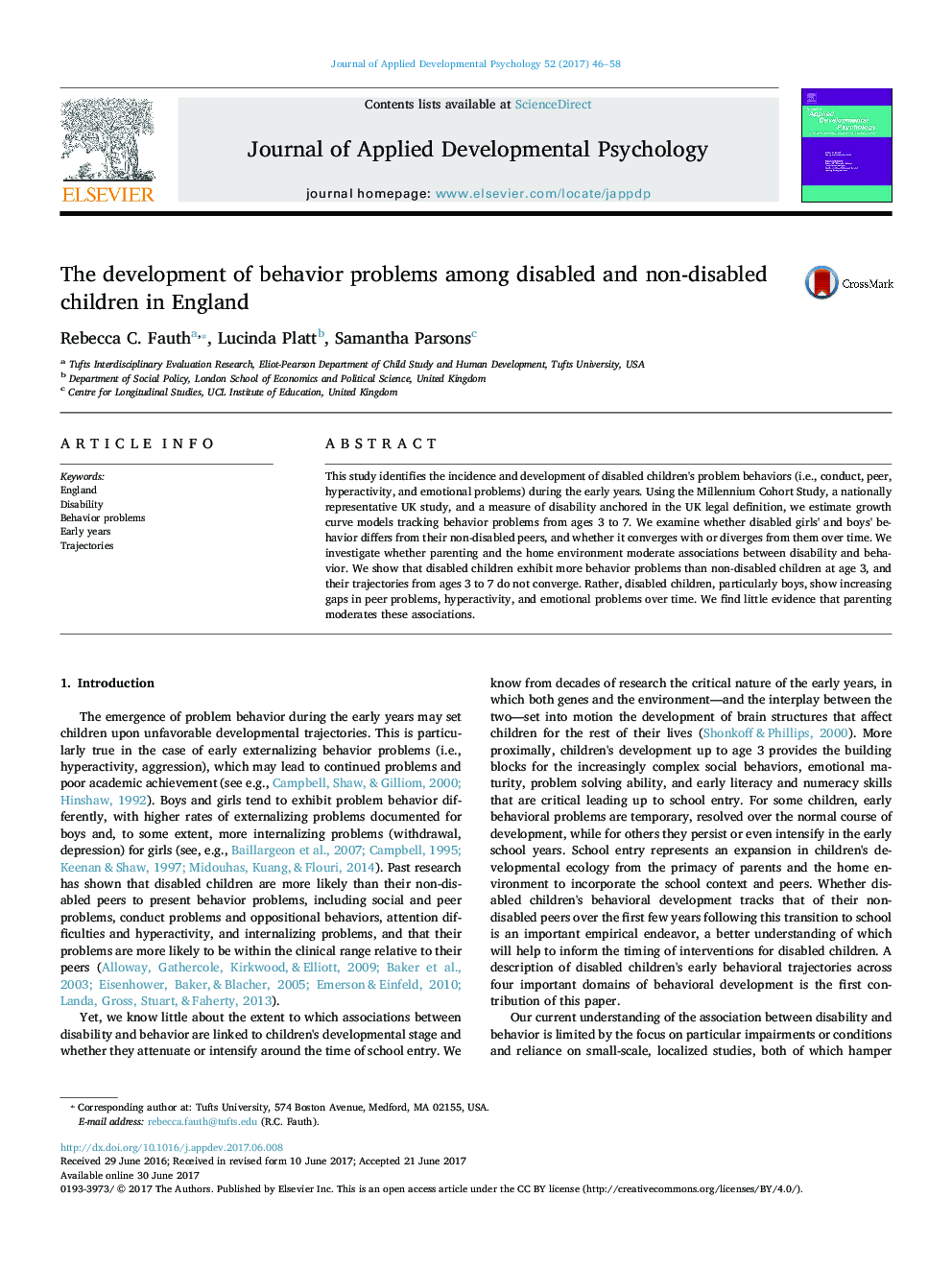| Article ID | Journal | Published Year | Pages | File Type |
|---|---|---|---|---|
| 4939137 | Journal of Applied Developmental Psychology | 2017 | 13 Pages |
â¢Tracked behavior problems for disabled and non-disabled children in England from ages 3 to 7â¢Used a measure of disability that aligns with UK disability legislationâ¢Disabled (vs. non-disabled) children exhibited more behavior problems at age 3.â¢Trajectories to age 7 did not converge between disabled and non-disabled children.â¢Parenting did not moderate links between disability and behavior problems.
This study identifies the incidence and development of disabled children's problem behaviors (i.e., conduct, peer, hyperactivity, and emotional problems) during the early years. Using the Millennium Cohort Study, a nationally representative UK study, and a measure of disability anchored in the UK legal definition, we estimate growth curve models tracking behavior problems from ages 3 to 7. We examine whether disabled girls' and boys' behavior differs from their non-disabled peers, and whether it converges with or diverges from them over time. We investigate whether parenting and the home environment moderate associations between disability and behavior. We show that disabled children exhibit more behavior problems than non-disabled children at age 3, and their trajectories from ages 3 to 7 do not converge. Rather, disabled children, particularly boys, show increasing gaps in peer problems, hyperactivity, and emotional problems over time. We find little evidence that parenting moderates these associations.
